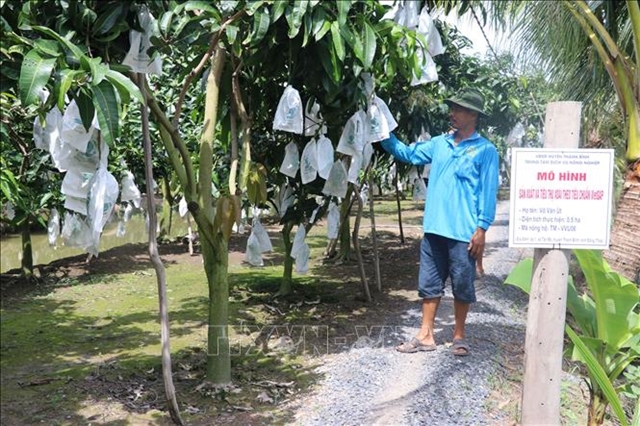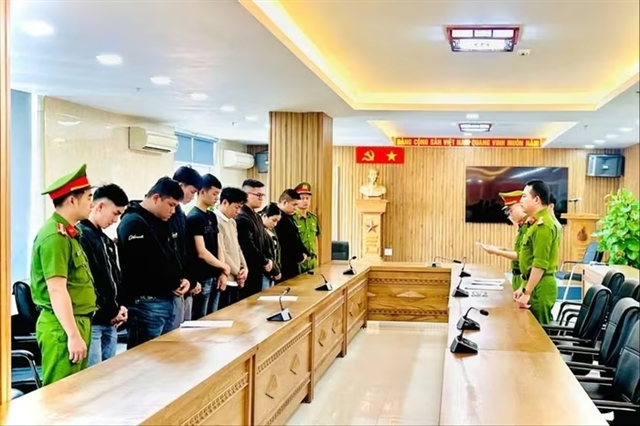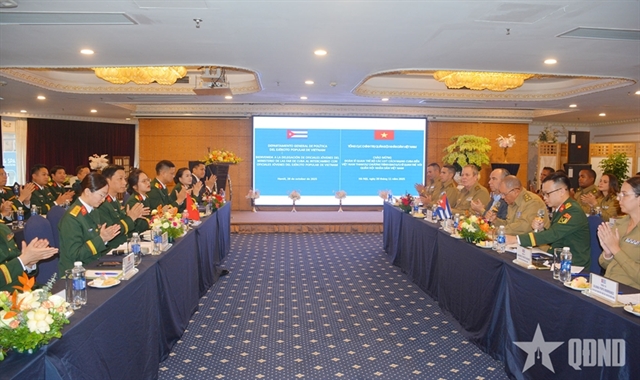 Politics & Law
Politics & Law


|
| The NH01-152 grape variety. Khánh Hòa Province (formerly Ninh Thuận) has created many new high-quality grape varieties to grow the sector and expand its reach into international markets. — VNA/VNS Photo Nguyễn Thành |
HCM CITY — Southern localities are accelerating the transition towards green and sustainable agriculture by embracing technology, expanding exports and developing environmentally friendly value chains to adapt to climate change.
Faced with growing climate challenges and global sustainability requirements, provinces and cities across the southern region are embracing a green economy model that integrates modern technology, circular production and green finance.
As one of Việt Nam’s key agricultural production and export hubs, the region is gradually shaping a modern, competitive and eco-friendly value chain.
In 2025, the Cửu Long (Mekong) Delta and southeastern provinces will have made notable progress in adopting green and high-tech agriculture.
Certified VietGAP and GlobalGAP models, water-saving irrigation systems, greenhouses, and circular farming practices are being scaled up, helping cut costs, raise productivity and meet export quality standards.
According to the Ministry of Agriculture and Environment, agricultural, forestry and fisheries exports reached US$52.31 billion in the first nine months of 2025, with farm produce alone accounting for $28.51 billion, reflecting growing global demand for high-quality, traceable and environmentally certified goods.
Southern localities are supporting enterprises and strengthening value-chain linkages to sustain this trend.
HCM City is expediting the development of its High-Tech Agricultural Park, specialised logistics systems and deep-processing facilities to anchor the region’s value chain.
Neighbouring provinces such as Tây Ninh and Đồng Tháp are also developing high-tech farming zones and connecting concentrated material areas for export-oriented production.
Deputy Minister of Agriculture and Environment Hoàng Trung said developing green and circular agriculture is crucial for adapting to climate change, ensuring food security and maintaining Việt Nam’s long-term competitiveness in global markets.
Enterprises are taking the lead in this transition.
Major exporters have invested in modern cold storage, processing lines, electronic traceability platforms, and standardised production processes.
A fruit export company in HCM City said meeting environmental and international certification standards not only fulfils market requirements but also helps firms secure higher-value contracts from European and North American buyers.
Alongside technological innovation, green finance has become a new driver of sustainable agriculture.
Projects focusing on emission reduction, sustainable land management, renewable energy and carbon credit generation are attracting growing interest.
Trần Gia Long, deputy head of the ministry’s department of planning and finance, said that with transparent mechanisms and clear evaluation criteria, agricultural carbon credits could become a vital supplementary funding source, enabling farmers and cooperatives to engage more deeply in green value chains.

|
| Farmers in Đồng Tháp cultivate mangoes to good agricultural practices (GAP) standards. — VNA/VNS Nguyễn Văn Trí |
Unlocking green finance opportunities
To accelerate sustainable transformation, many southern provinces are strengthening public–private–research partnerships to improve technical capacity, human resources and supply chain linkages.
At a recent conference on crop production in Đồng Tháp Province, policymakers, scientists, businesses, and farmers discussed measures to reduce post-harvest losses, expand safe production areas and boost processing and consumption.
Experts said achieving low-emission agriculture requires stronger international cooperation and greater access to green financial resources.
Green agriculture can only thrive with long-term investment incentives and a fair distribution of benefits among the State, enterprises and farmers.
It is also vital to establish a legal framework for a carbon credit market and promote new-generation cooperatives that act as “locomotives” driving farmers’ participation.
In several provinces, including Đồng Tháp, Vĩnh Long and Tây Ninh, farmers have already converted thousands of hectares of low-yield rice fields into fruit orchards, safe vegetable farms, rice–shrimp rotation systems, and agro-ecotourism models.
These transformations optimise water resources and basically double incomes obtained from traditional farming.
Enterprises are also investing more in processing and standardising supply chains to improve productivity and export value.
Many cooperatives have adopted circular farming models that recycle by-products into fertilisers or animal feed, thus cutting costs while reducing greenhouse gas emissions.
Economist Lê Đăng Doanh said the green economy is no fad but a necessity for global competitiveness.
“Those who lead in technology adoption and supply chain transparency will be the ones to win in the export markets.”
In the fourth quarter of 2025, southern provinces are focusing on strengthening production chain management, upgrading post-harvest and storage infrastructure, developing a carbon credit framework, and expanding circular farming models suited to local conditions.
According to the ministry, agricultural exports have significant growth potential if the sector continues to prioritise quality, traceability and value-added products.
With synchronised efforts in technology, policy and green finance, the southern region is poised to move beyond its traditional role as the nation’s “rice and fruit basket” and become a regional hub for sustainable and green agricultural production. — VNS




